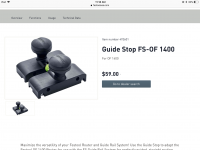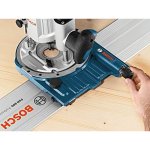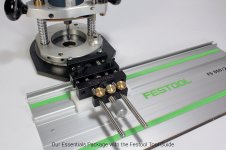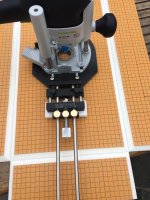Hello,
I'm a new hobbyist and want to get my first router.
Since I have TS-55 with rails and Festool DC, the OF-1400 immediately came up as an option. Also considering Bosch GMF1600CE (US version MCR23).
I've read probably everything on the web comparing the two and couldn't see a clear winner.
What I did notice mentioned a few times that the OF1400 is not very good for edge routing due to high center of gravity, small base and pistol like handling. A few wrote it is a cause for wobbling. And for that the Bosch is better due to lower CG and different type of handles.
Is that indeed the case?
Also, the main advantage I understand of the OF1400 for me is that I have the rail system and can use it with the rails. However, I've seen posts on connecting the Bosch to the Festool rail using a simple home made jig (two rods + a piece of plywood) - is that stable enough jig?
Assuming price is not an issue (for some strange reasons, the two would cost me the same) would you get the OF1400 or the the Bosch?
Thanks
I'm a new hobbyist and want to get my first router.
Since I have TS-55 with rails and Festool DC, the OF-1400 immediately came up as an option. Also considering Bosch GMF1600CE (US version MCR23).
I've read probably everything on the web comparing the two and couldn't see a clear winner.
What I did notice mentioned a few times that the OF1400 is not very good for edge routing due to high center of gravity, small base and pistol like handling. A few wrote it is a cause for wobbling. And for that the Bosch is better due to lower CG and different type of handles.
Is that indeed the case?
Also, the main advantage I understand of the OF1400 for me is that I have the rail system and can use it with the rails. However, I've seen posts on connecting the Bosch to the Festool rail using a simple home made jig (two rods + a piece of plywood) - is that stable enough jig?
Assuming price is not an issue (for some strange reasons, the two would cost me the same) would you get the OF1400 or the the Bosch?
Thanks




